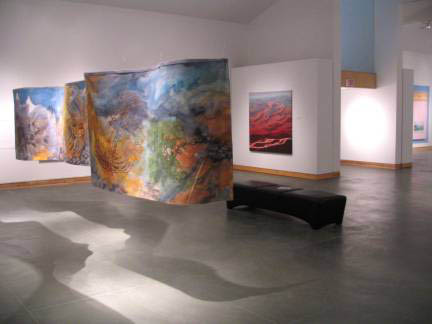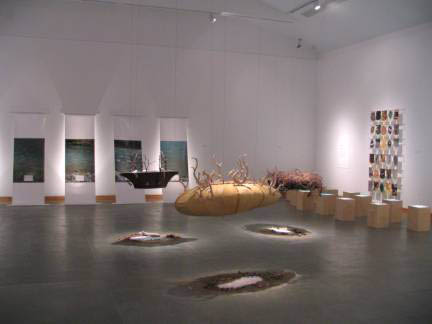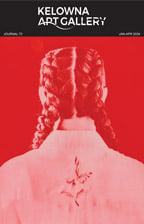February 4 to April 2, 2006
Organized and circulated by the Yukon Arts Centre
Curated by Scott Marsden
three rivers: wild waters, sacred places is situated within a current exploration of the culture of landscape and water and within the context of ecological concerns. This exhibition explores the landscape and rivers but from a distinct place — northern Canada — as it attempts to re-define notions of place and identity.
Represented are works by eight visual artists from across Canada and the Yukon who participated in the Three Rivers Journey in the summer of 2003. These journeys down the Wind, Snake and Bonnet Plume Rivers challenged the artists both physically and emotionally. In some cases they experienced dangerous situations, which influenced their concept of the wilderness.
The art works in this exhibition explore subjective concepts of the north, but should not be seen as an attempt to understand the north. These artists are searching for meaning in differences between the landscape they know and a landscape they may be unfamiliar with. The north remains a mystery to many Canadians who may have visited it only in imagination. These artists attempt to help us unravel this mystery and take us on a journey through unknown territory. The art works articulate a personal search for meaning from the unique geographical, social and cultural context of the Yukon.
Michael Belmore’s work uses traditional metalsmithing techniques of chasing and respousse to create forms out of copper (a material indigenous to the Yukon) based on forms found along the Wind River as it navigates the Yukon’s topography. Ron Bolt, in three very distinct artworks for this exhibition, explores relationships between pattern, colour, form and detail using an abstract style to generate images that speak of the power and strangeness of the northern landscape. Marlene Creates has created a series of photo-landworks made on location during her journey down the Snake River. Gwen Curry’s work, influenced by her passion for the environment, extends the idea of witnessing to the fragility of the northern landscape and its inhabitants. Jane Isakson’s work explores the cycles within nature: seasonal rhythms, wildlife migrations and adaptations of smaller cycles within larger ones. Joyce Majiski’s work is based on her personal and physical journey through the Yukon’s wild places. José Mansilla-Miranda’s work draws on his religious beliefs, as his river journey was a profoundly personal and spiritual experience deepened by his interactions with and interpretation of the landscape through the eyes of a First Nations elder. Haruko Okano’s Japanese-Canadian heritage and the principles of Wabi-Sabi have influenced her art practice, and the combination of texture, odiferous elements and soundscapes in her three boat/pod-like forms suspended from the ceiling provides viewers with an immersion experience referencing the artist’s journey.
Scott Marsden
Gallery Curator
Yukon Arts Centre
Public Art Gallery











